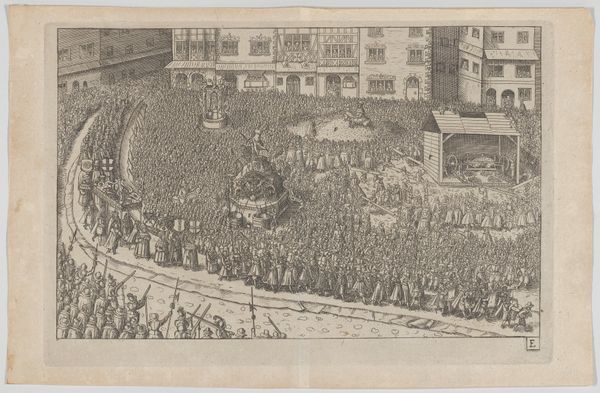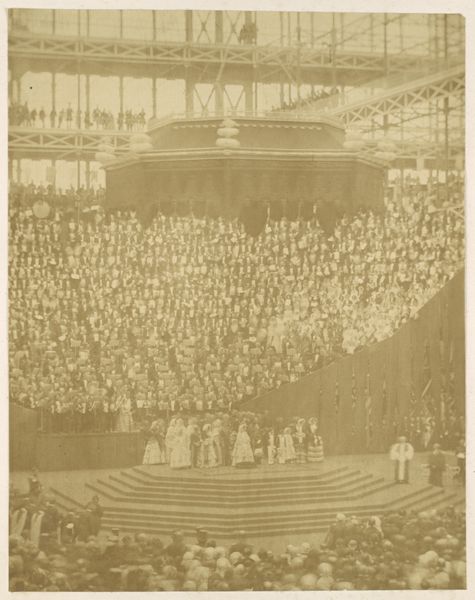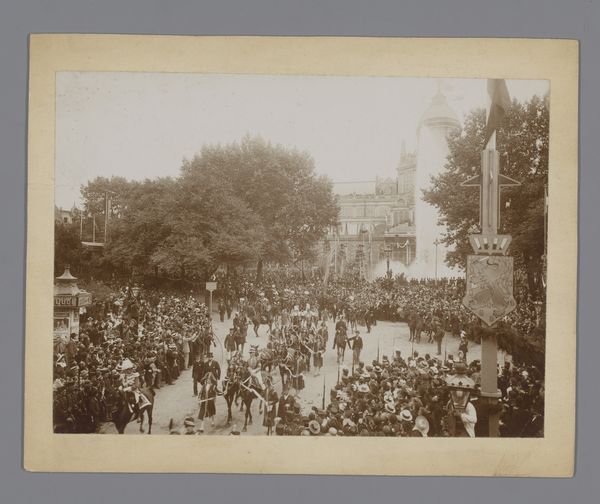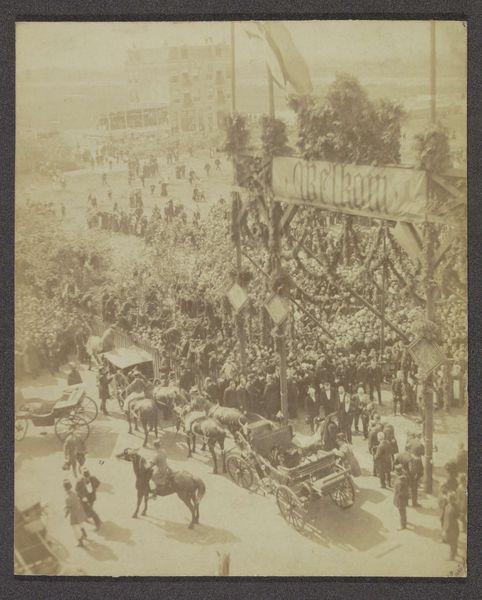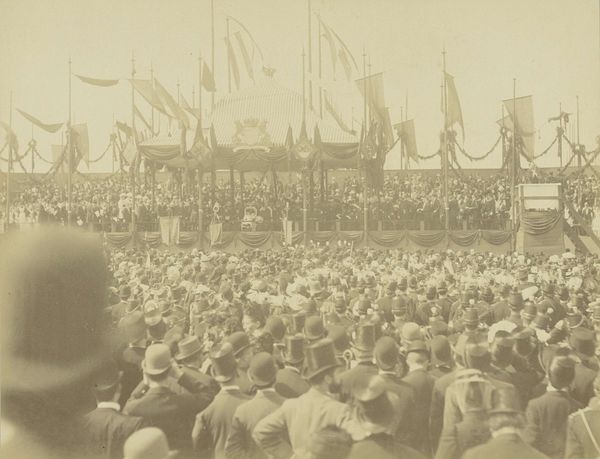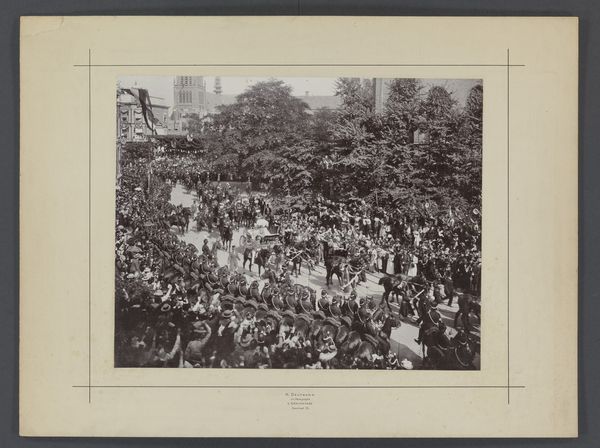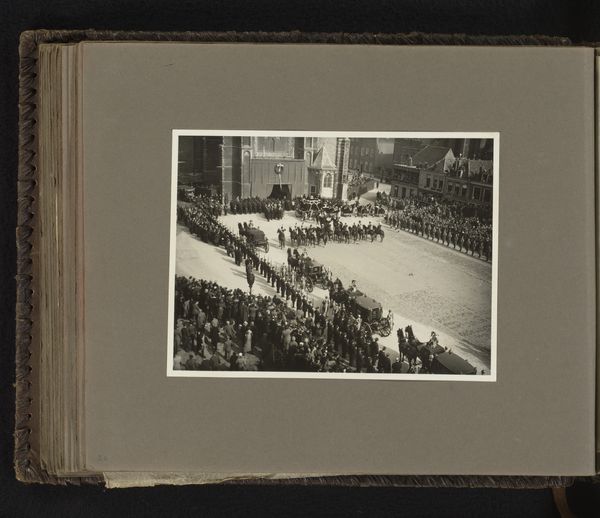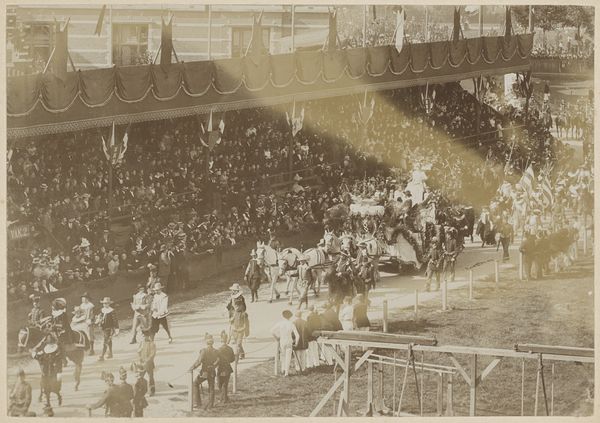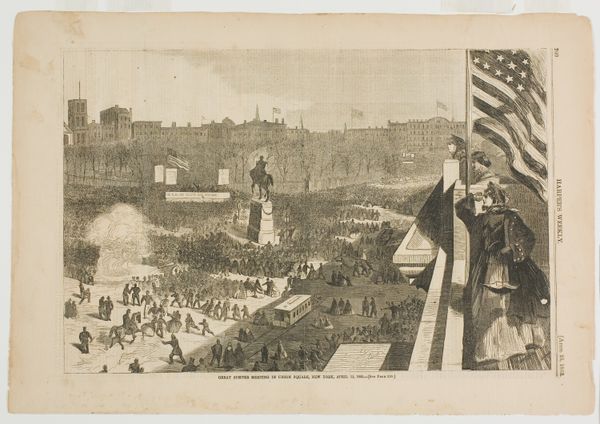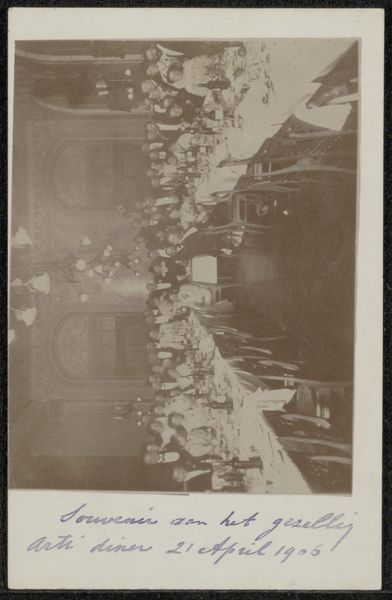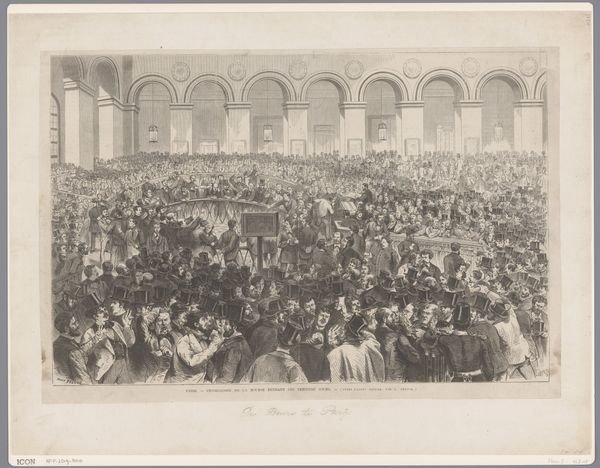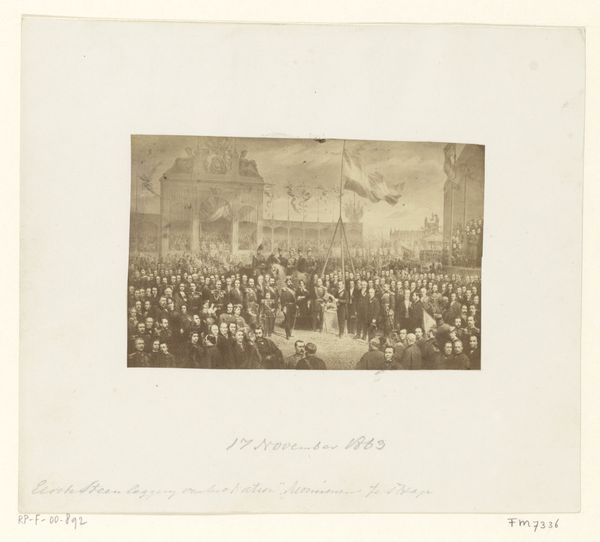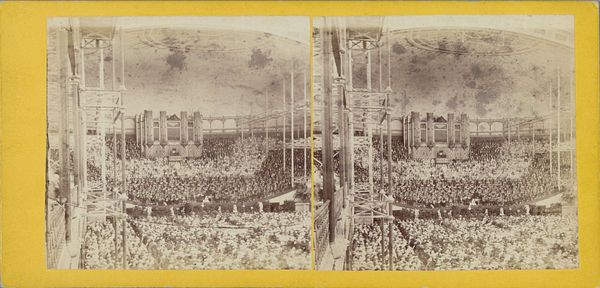
Prins Hendrik en koningin Wilhelmina in een rijtuig in Amsterdam omringd door veel publiek 1900 - 1930
0:00
0:00
photography, gelatin-silver-print
#
portrait
#
pictorialism
#
photography
#
photojournalism
#
gelatin-silver-print
#
cityscape
#
genre-painting
#
realism
Dimensions: height 163 mm, width 210 mm, height 166 mm, width 215 mm
Copyright: Rijks Museum: Open Domain
Editor: This photograph, taken sometime between 1900 and 1930, captures Prince Hendrik and Queen Wilhelmina in a carriage in Amsterdam, amidst a large crowd. It’s anonymous, and it’s a gelatin-silver print. It feels like the photographer was trying to capture not just a scene, but also a feeling – a national event of some kind. What visual symbols stand out to you? Curator: What immediately strikes me is the density of the crowd – a sea of faces, almost indistinguishable, yet all turned towards the central figures of the Queen and Prince. Flags abound. Notice how they punctuate the dark mass of people; they are the primary symbolic visual language of nationhood on full display. They’re arranged almost like visual exclamation points. What feelings do the flags evoke for you, knowing they frame the royals? Editor: That's interesting. They almost look like blank slates; perhaps representing potential? Or is that too abstract? Curator: Not at all. Consider what a flag *is*: a shared visual shorthand. It condenses history, aspiration, and collective identity into simple colors and shapes. Here, against the mass of individuals, these repeating shapes suggest unity, but also the potential for anonymity within the group. Note also the architecture behind. Does that also play into this language? Editor: I see what you mean! It's stately, solid. Reinforces a sense of permanence and history behind this…this…moment? Curator: Precisely. That architectural backdrop becomes another layer of symbolic weight. Consider the photographic medium itself – how its realism lends authority. It invites us to believe in the scene's authenticity, reinforcing the monarchy’s presence within this historical and architectural context. How might we understand photojournalism at that time in relationship to national pride? Editor: That’s a lot to consider! I hadn’t really thought about how many layers were working together here. So it's not just a picture, it’s a construction of…meaning. Curator: Exactly! The power of images lies in their ability to speak to us on multiple levels simultaneously. A grand performance recorded, shaped, and memorialized.
Comments
No comments
Be the first to comment and join the conversation on the ultimate creative platform.
